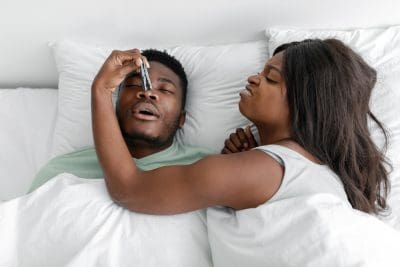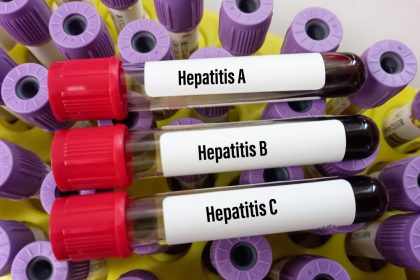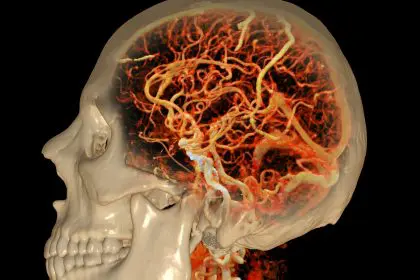When a stroke occurs, every minute counts. This medical emergency, often called a “brain attack,” happens when blood flow to part of the brain is interrupted, depriving brain cells of oxygen and nutrients. Within minutes, brain cells begin to die, potentially causing permanent damage or death.
The devastation strokes cause extends far beyond the initial event. As the second leading cause of death worldwide and a leading cause of adult disability, strokes affect nearly 800,000 Americans annually, with someone experiencing this medical emergency approximately every 40 seconds.
Unlike heart attacks, which often announce themselves with dramatic chest pain, strokes can be eerily silent or present with subtle symptoms that many people misinterpret or ignore. This delayed recognition frequently leads to treatment delays that significantly worsen outcomes.
The good news amid these sobering statistics? Up to 80% of strokes are preventable through lifestyle modifications and medical interventions. For those who do experience a stroke, modern treatment approaches can dramatically improve recovery when implemented quickly.
Understanding the different types of strokes helps clarify prevention and treatment strategies. Ischemic strokes, accounting for 87% of cases, occur when blood vessels to the brain become blocked. Hemorrhagic strokes, representing the remaining 13%, happen when blood vessels rupture, allowing blood to leak into brain tissue.
Both stroke types cause similar symptoms but require different treatments, making rapid professional assessment crucial for proper care. This underscores the importance of recognizing stroke symptoms and seeking immediate emergency medical attention when they appear.
Know the warning signs that save lives
Recognizing stroke symptoms quickly can mean the difference between recovery and permanent disability or death. The “FAST” acronym provides an easy-to-remember tool for identifying the most common stroke warning signs:
Face drooping: Ask the person to smile. Does one side of the face droop or appear uneven? This facial asymmetry often signals a stroke affecting the brain regions controlling facial muscles.
Arm weakness: Have the person raise both arms. Does one arm drift downward? This one-sided weakness or numbness indicates potential brain damage affecting motor control.
Speech difficulty: Ask the person to repeat a simple phrase. Is their speech slurred, strange, or incomprehensible? Language difficulties, including trouble speaking or understanding speech, commonly occur during strokes.
Time to call emergency services: If someone shows any of these symptoms, even if they disappear, call 911 immediately and note when symptoms first appeared. This timing information proves crucial for treatment decisions.
While these represent the most common symptoms, other warning signs include sudden severe headache with no known cause, unexpected dizziness or loss of balance, confusion, trouble seeing in one or both eyes, and numbness in the leg or one side of the body.
Transient ischemic attacks (TIAs) or “mini-strokes” produce similar symptoms that resolve within minutes to hours. Far from being harmless events, these warning episodes indicate significantly elevated stroke risk and require immediate medical attention despite symptom resolution.
Women sometimes experience additional or different stroke symptoms than men, including hiccups, nausea, general weakness, fatigue, disorientation, and chest pain. This symptom variation contributes to delayed treatment for many women experiencing strokes.
Prevention: control the modifiable risk factors
Preventing strokes begins with understanding and managing key risk factors. While some risk factors like age, family history, and ethnicity remain beyond control, many others respond well to lifestyle modifications and medical management.
Hypertension tops the list of modifiable risk factors, nearly doubling stroke risk when uncontrolled. Regular blood pressure monitoring and maintaining readings below 120/80 mm Hg through medication, diet, exercise, and stress management substantially reduces stroke likelihood.
Smoking damages blood vessels, increases clot formation, and raises blood pressure—a dangerous combination that significantly elevates stroke risk. Quitting smoking rapidly improves vascular health, with former smokers seeing their stroke risk approach that of nonsmokers within 2-5 years after cessation.
Diabetes accelerates blood vessel damage and often occurs alongside other stroke risk factors like hypertension and high cholesterol. Tight glucose control through medication, diet, and exercise helps minimize the additional stroke risk this condition creates.
Atrial fibrillation, an irregular heart rhythm, allows blood to pool and form clots that can travel to the brain. Managing this condition with medications like blood thinners can reduce stroke risk by up to 70% in affected individuals.
Physical inactivity increases stroke risk through multiple mechanisms, including higher blood pressure and weight. Regular moderate exercise—just 30 minutes five times weekly—reduces stroke risk by 25-30% while improving overall cardiovascular health.
Poor nutrition contributes to stroke risk through effects on blood pressure, cholesterol, weight, and diabetes risk. The Mediterranean diet, rich in fruits, vegetables, whole grains, olive oil, and lean proteins, has demonstrated particularly strong protective effects against stroke.
Excessive alcohol consumption raises blood pressure and stroke risk, while moderate intake (up to one drink daily for women, two for men) might offer slight protective benefits. Those who don’t drink shouldn’t start for potential benefits, while current drinkers should limit intake.
Obstructive sleep apnea, often undiagnosed, independently increases stroke risk through effects on blood pressure and oxygen levels. Screening and treatment with continuous positive airway pressure (CPAP) therapy can substantially reduce this risk.
For individuals with multiple risk factors, regular physician consultation helps develop comprehensive prevention strategies combining lifestyle modifications, monitoring, and medications tailored to their specific risk profile.
The crucial first hours: acute treatment options
When a stroke occurs, rapid treatment dramatically improves outcomes. Modern stroke care focuses on restoring blood flow to affected brain regions while minimizing further damage during the critical first hours.
For ischemic strokes, clot-dissolving medication (tissue plasminogen activator or tPA) represents the gold standard treatment when administered within 4.5 hours of symptom onset. This medication breaks down clots blocking blood flow, potentially reversing damage if given quickly enough.
Advanced imaging techniques help identify eligible patients beyond the standard treatment window. Perfusion imaging can detect salvageable brain tissue up to 24 hours after symptom onset in select patients, expanding treatment opportunities for those who might otherwise miss the standard window.
Mechanical thrombectomy—physically removing clots using specialized devices—has revolutionized treatment for severe ischemic strokes caused by large vessel occlusions. This procedure can restore blood flow up to 24 hours after symptom onset in carefully selected patients.
Hemorrhagic strokes require fundamentally different approaches focused on controlling bleeding and reducing pressure within the skull. Medications to lower blood pressure, reverse blood thinners, and reduce brain swelling form the first line of treatment for these events.
Surgical interventions for hemorrhagic strokes include procedures to repair damaged blood vessels, remove accumulated blood, and relieve pressure within the skull. These operations must balance the risks of surgery against potential benefits based on hemorrhage size and location.
Specialized stroke centers with comprehensive capabilities significantly improve outcomes compared to general hospitals. These facilities maintain specialized teams, protocols, and equipment for rapid stroke diagnosis and treatment, highlighting the importance of transportation to appropriate facilities.
Telemedicine networks extend specialized stroke care to rural and underserved areas, allowing remote neurologists to evaluate patients via video and guide local physicians through appropriate treatments. This approach helps address geographical disparities in stroke care access.
Hospital care: stabilizing and preventing complications
After initial emergency treatment, hospital care focuses on determining stroke cause, preventing complications, and beginning early rehabilitation efforts. This phase establishes the foundation for long-term recovery.
Comprehensive diagnostic evaluation identifies the specific stroke cause, guiding secondary prevention efforts. This workup typically includes brain imaging, blood vessel studies, heart rhythm monitoring, and blood tests to detect conditions like diabetes, high cholesterol, and clotting disorders.
Preventing recurrent strokes becomes a primary focus, with treatments tailored to the underlying cause. These might include blood thinners for atrial fibrillation, carotid artery surgery or stenting for severe narrowing, or aggressive blood pressure management for hypertension-related strokes.
Swallowing assessments address aspiration risk, as many stroke survivors develop difficulty swallowing safely. Specialized speech therapists evaluate swallowing function and recommend appropriate food textures, feeding techniques, or temporary feeding tubes when necessary.
Mobility evaluations determine fall risk and appropriate physical therapy approaches. Early mobilization—getting patients moving as soon as medically stable—helps prevent complications like blood clots, pressure sores, and pneumonia while promoting neurological recovery.
Blood sugar management takes on particular importance, as elevated levels during stroke recovery correlate with worse outcomes regardless of prior diabetes status. Tight glucose control through the acute recovery phase improves brain healing and functional outcomes.
Psychological assessment addresses the depression and anxiety that frequently follow strokes. Identifying and treating these conditions early improves participation in rehabilitation and overall recovery outcomes through both behavioral and medication interventions.
Discharge planning begins early, with the healthcare team assessing home safety, caregiver availability, and appropriate next settings based on recovery progress. This planning ensures continuity of care as patients transition from acute hospitalization to rehabilitation settings.
Rehabilitation: rewiring the brain for recovery
Stroke rehabilitation harnesses neuroplasticity—the brain’s ability to reorganize and form new connections—to maximize recovery. This process begins in the hospital and continues for months or years afterward, evolving as recovery progresses.
Physical therapy addresses movement impairments by rebuilding strength, coordination, and balance through specialized exercises and techniques. Approaches like constraint-induced movement therapy, which restrains the unaffected limb to force use of the affected one, leverage neuroplasticity principles to accelerate recovery.
Occupational therapy focuses on regaining independence in daily activities like dressing, bathing, and cooking. Therapists teach adaptive techniques and recommend equipment modifications that compensate for remaining disabilities while promoting continued functional improvement.
Speech therapy addresses communication and swallowing difficulties through exercises targeting affected muscle groups and alternative communication strategies. This therapy may begin with basics like tongue movements and progress to conversation practice as recovery advances.
Cognitive rehabilitation targets thinking and memory problems through structured activities designed to improve attention, problem-solving, and information processing. These approaches combine practice and strategy training to maximize cognitive recovery.
Robotic therapy devices provide intensive, repetitive movement practice that promotes neural reorganization more efficiently than conventional approaches alone. These technologies allow for hundreds of repetitions per session with precise feedback that accelerates motor learning.
Virtual reality systems create engaging, customizable environments for practicing real-world activities in controlled settings. These immersive experiences increase motivation while providing safe opportunities to practice challenging tasks like crossing streets or navigating crowded spaces.
Brain stimulation techniques including transcranial magnetic stimulation (TMS) and transcranial direct current stimulation (tDCS) show promise for enhancing recovery when combined with traditional rehabilitation. These non-invasive approaches temporarily modify brain activity in specific regions to facilitate neuroplasticity.
Home exercise programs extend rehabilitation beyond formal therapy sessions, maximizing recovery potential through consistent practice. Therapists design personalized programs that patients and caregivers implement daily, gradually increasing independence as recovery progresses.
Secondary prevention: stopping the next stroke
After surviving a first stroke, preventing a second becomes critical. Recurrent strokes often cause more severe damage than initial events, making aggressive prevention strategies essential for long-term health and independence.
Blood pressure management represents the single most effective strategy for preventing recurrent strokes. Target levels typically range lower than general population guidelines, with many specialists recommending levels below 130/80 mm Hg through medication and lifestyle modifications.
Antiplatelet medications like aspirin, clopidogrel, or combination therapies reduce clot formation for most ischemic stroke survivors. These medications decrease recurrence risk by 25% when appropriately prescribed based on individual stroke cause and risk factors.
Anticoagulants provide stronger protection for those with atrial fibrillation or certain other conditions that significantly increase clot risk. Newer direct oral anticoagulants offer advantages over traditional warfarin, including fixed dosing and fewer food and drug interactions.
Statin medications benefit most stroke survivors regardless of cholesterol levels by stabilizing arterial plaques and reducing inflammation. These medications decrease recurrent stroke risk through multiple mechanisms beyond simple cholesterol reduction.
Carotid interventions including surgery (endarterectomy) or stenting remove dangerous plaque buildup in neck arteries feeding the brain. These procedures particularly benefit patients with significant narrowing who have experienced related symptoms.
Lifestyle modifications gain even greater importance after a first stroke. Smoking cessation, dietary improvements, regular exercise, stress management, and moderate alcohol consumption collectively create substantial protection against recurrence.
Regular monitoring ensures prevention strategies remain effective as health status changes over time. This includes periodic blood pressure checks, cholesterol testing, diabetes screening, heart rhythm evaluation, and medication effectiveness assessments.
Life after stroke: adapting to the new normal
Recovery continues long after formal rehabilitation ends, with many survivors experiencing ongoing improvements for years. Adapting to post-stroke life involves both practical adjustments and psychological adaptations that evolve over time.
Home modifications enhance safety and independence by addressing specific post-stroke challenges. These might include installing grab bars, removing trip hazards, adding stairlifts, or reorganizing living spaces to accommodate mobility devices and prevent falls.
Assistive technologies range from simple devices like button hooks and jar openers to sophisticated computer systems controlled by eye movements or voice. These tools compensate for persistent disabilities while enabling greater independence in daily activities.
Returning to work becomes an important recovery milestone for many younger stroke survivors. Vocational rehabilitation specialists help develop strategies for workplace reentry, including gradual return schedules, job modifications, and assistive technology implementation.
Driving evaluation determines when and if survivors can safely return to independent transportation. Specialized occupational therapists assess cognitive, visual, and physical abilities affecting driving safety and recommend appropriate restrictions or vehicle modifications.
Relationship changes inevitably follow strokes, particularly when caregiving responsibilities shift family dynamics. Counseling helps couples and families navigate these changes, establish healthy boundaries, and maintain intimacy despite new caregiver-care recipient relationships.
Peer support connects survivors with others who truly understand the stroke experience. Support groups, whether in-person or online, provide valuable emotional support, practical advice, and motivation during the long recovery journey.
Physical activity adapted to post-stroke abilities improves both physical and mental health while potentially enhancing ongoing recovery. Options range from seated exercises and water-based programs to adaptive sports and specialized fitness classes for stroke survivors.
Finding meaning after stroke helps many survivors redefine their identity and purpose. Whether through advocacy work, creative pursuits, mentoring other survivors, or spiritual practices, developing new sources of meaning supports psychological adjustment to post-stroke life.
The future of stroke care
Emerging approaches promise to transform stroke prevention, treatment, and rehabilitation in coming years. These innovations build on current understanding while leveraging new technologies and treatment paradigms.
Mobile stroke units—ambulances equipped with CT scanners and specialized personnel—bring emergency stroke care directly to patients. These units enable diagnosis and treatment initiation before hospital arrival, potentially saving critical minutes during the narrow treatment window.
Artificial intelligence applications increasingly support rapid stroke diagnosis through automated image analysis. These systems identify subtle early signs of stroke and help prioritize patients for immediate treatment, potentially improving outcomes through faster care.
Expanded treatment windows continue to evolve as research identifies patients who benefit from interventions beyond traditional time limits. Advanced imaging techniques that detect salvageable brain tissue allow more patients to receive beneficial treatments despite delayed arrivals.
Neuroprotective therapies aim to shield vulnerable brain cells during strokes, extending the window for effective treatment. While previous attempts showed limited success, newer approaches targeting multiple protection mechanisms show greater promise in ongoing trials.
Stem cell therapies represent a potential paradigm shift in stroke recovery by replacing damaged brain cells and promoting healing. Early clinical trials demonstrate safety and hint at efficacy, particularly when cells are administered during specific recovery phases.
Brain-computer interfaces allow direct communication between the brain and external devices, potentially bypassing damaged neural pathways. These systems may eventually enable thought-controlled prosthetics and communication devices for severely affected survivors.
Personalized rehabilitation leveraging genetic and biomarker data promises to optimize recovery approaches for individual patients. By identifying biological factors that influence recovery potential, these approaches could guide more effective, targeted rehabilitation strategies.
Preventive advances focusing on inflammation, gut microbiome influences, and novel risk factors may further reduce stroke incidence through targeted interventions. These emerging approaches complement traditional risk factor management to provide more comprehensive prevention.
With continued research and implementation of existing knowledge, strokes may eventually transition from a leading cause of disability to a largely preventable and treatable condition. This vision requires both scientific advancement and public health initiatives that ensure all potential stroke victims receive optimal prevention, immediate treatment, and comprehensive rehabilitation.















